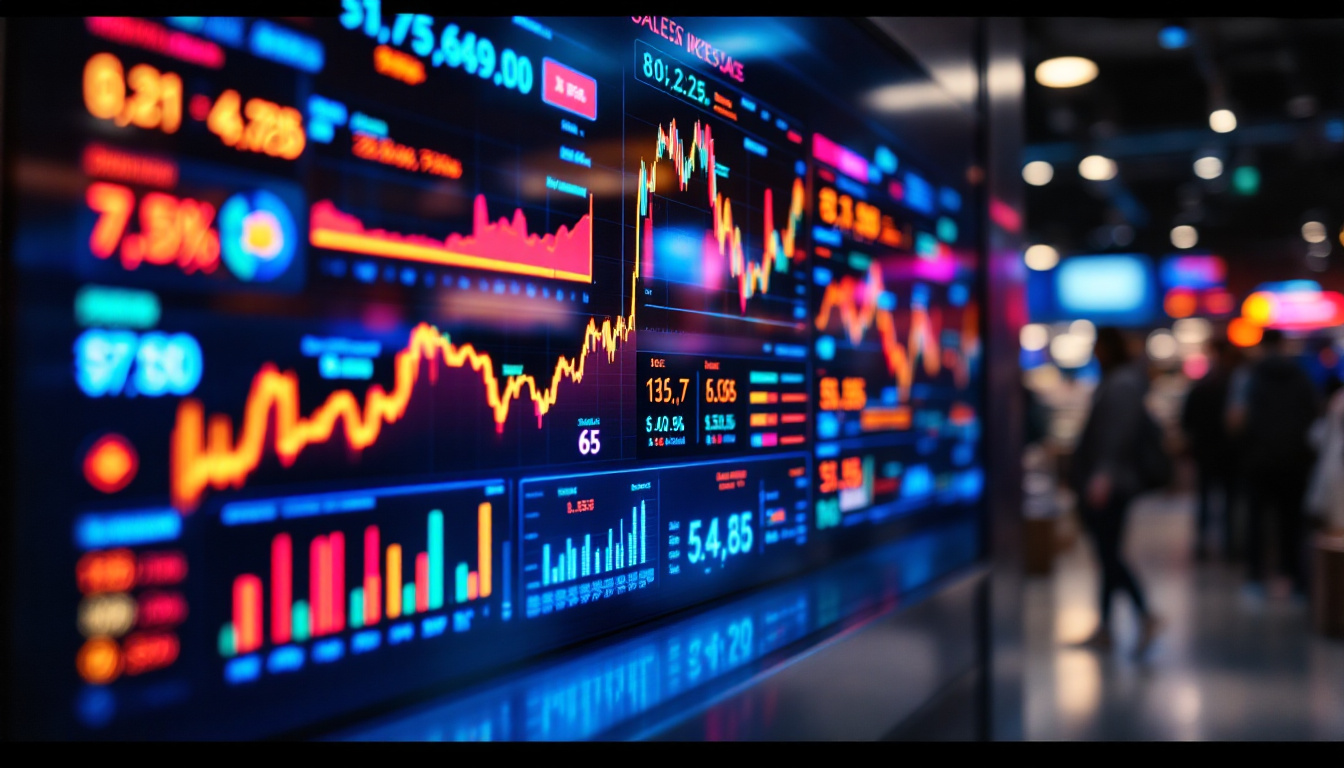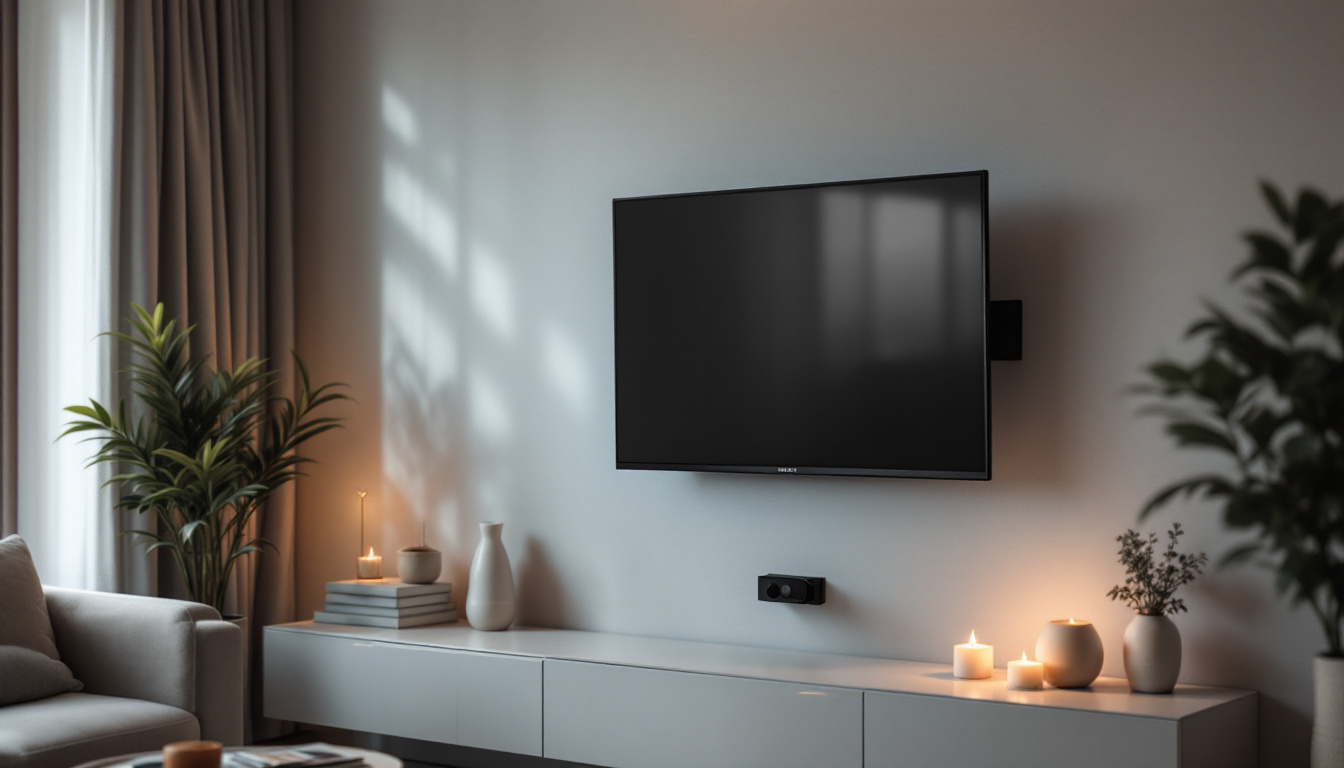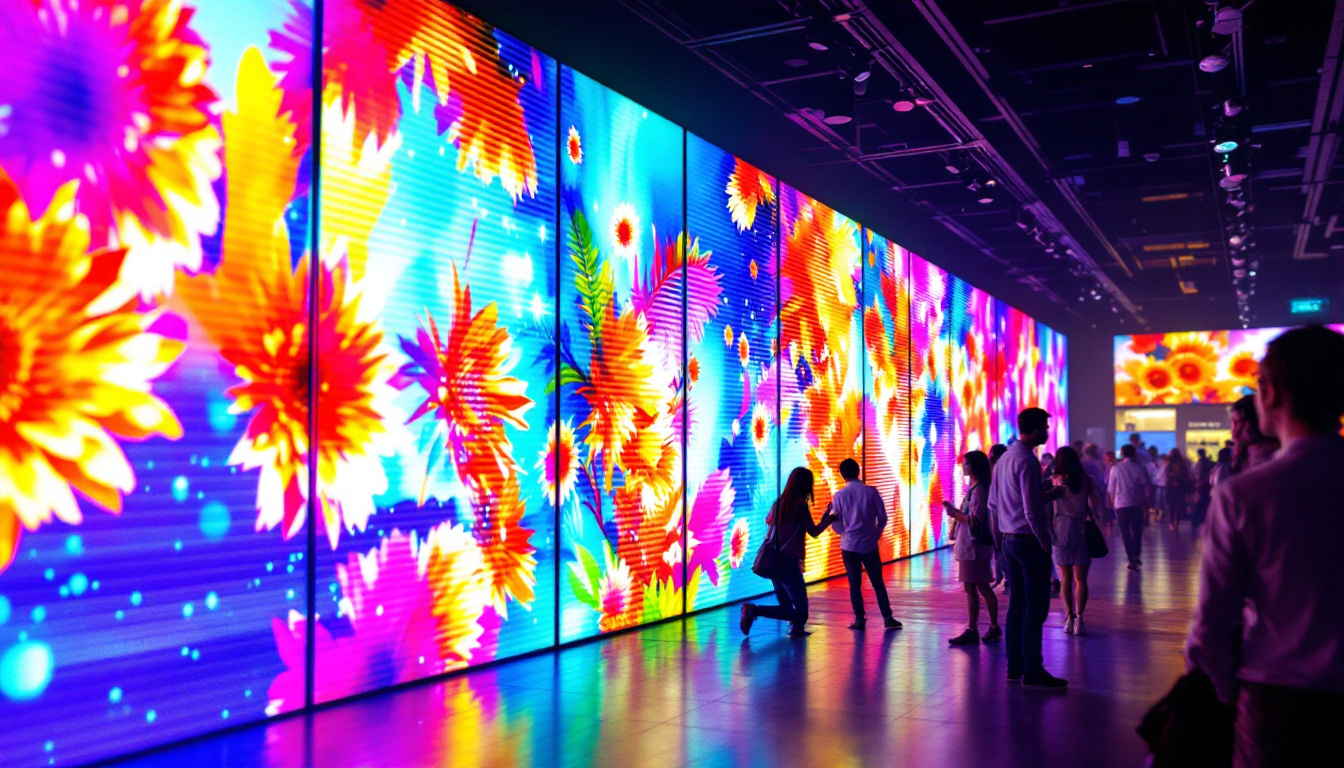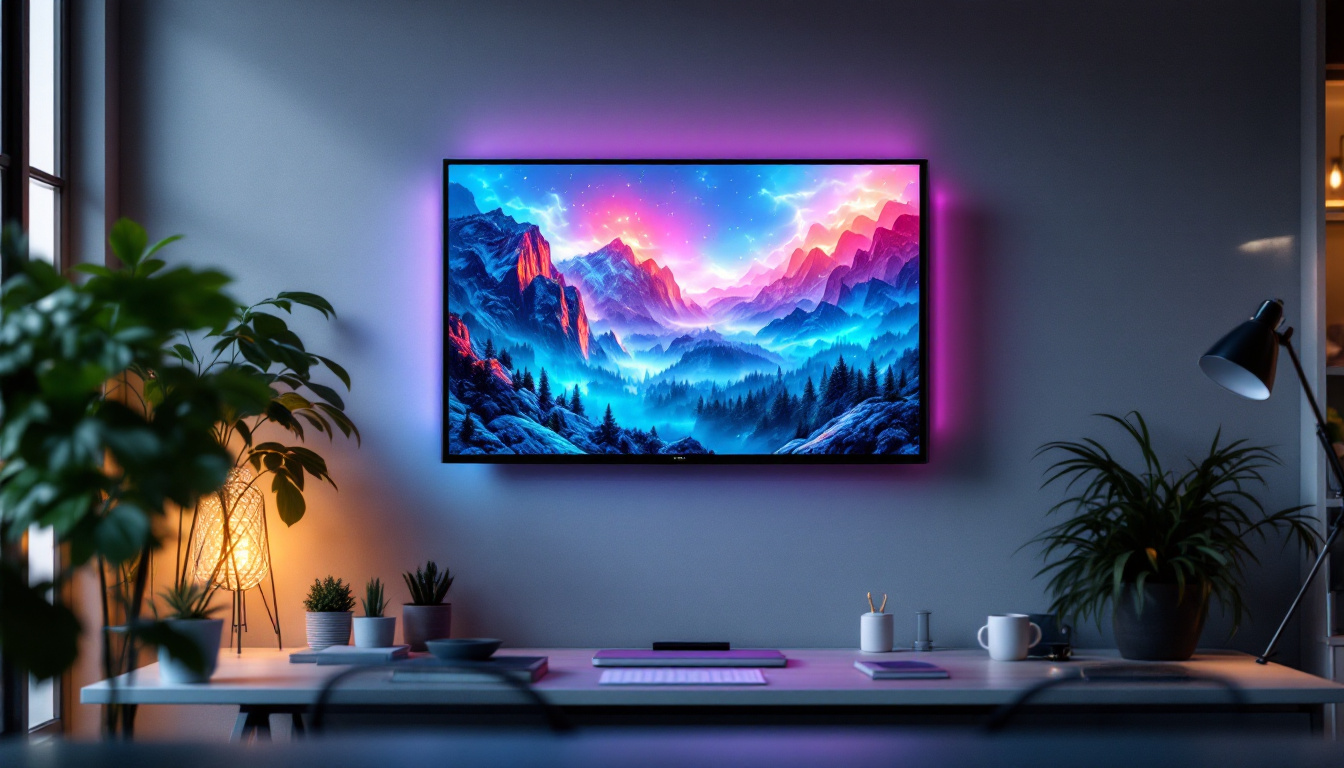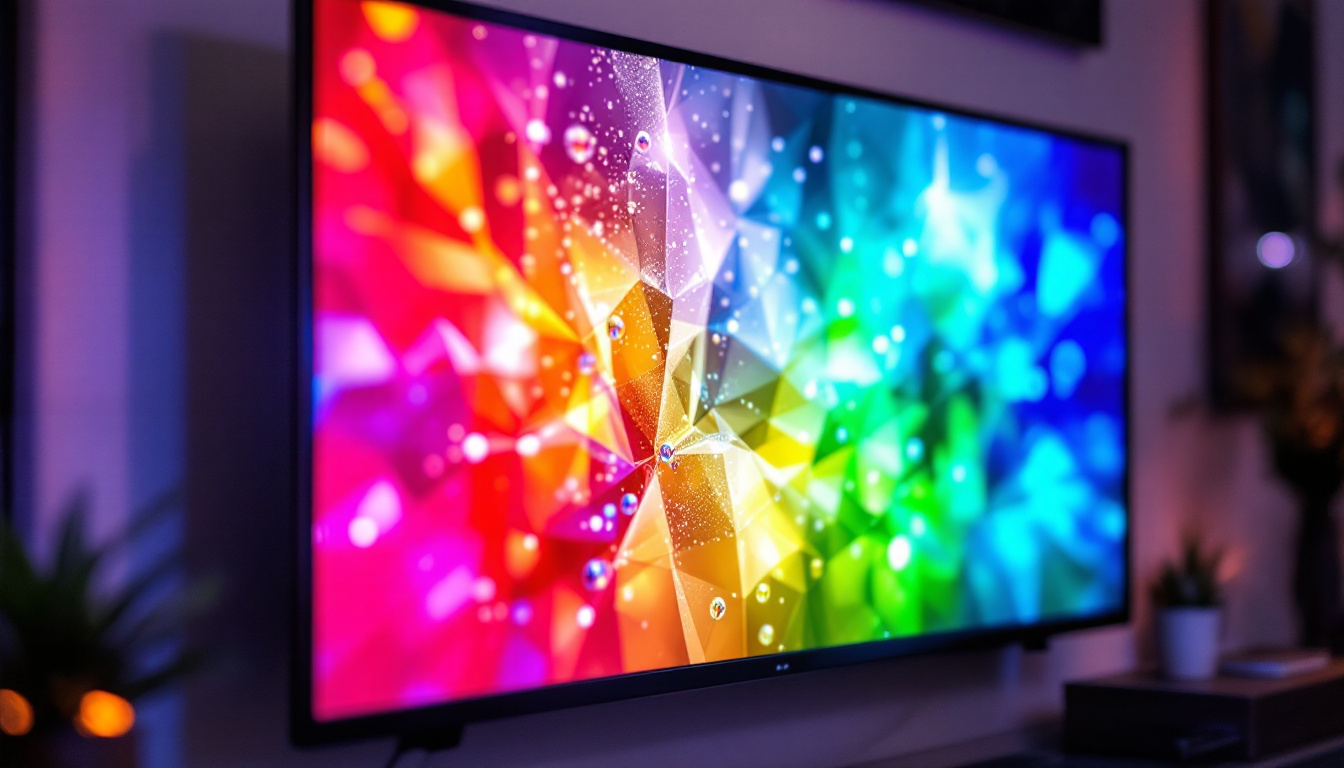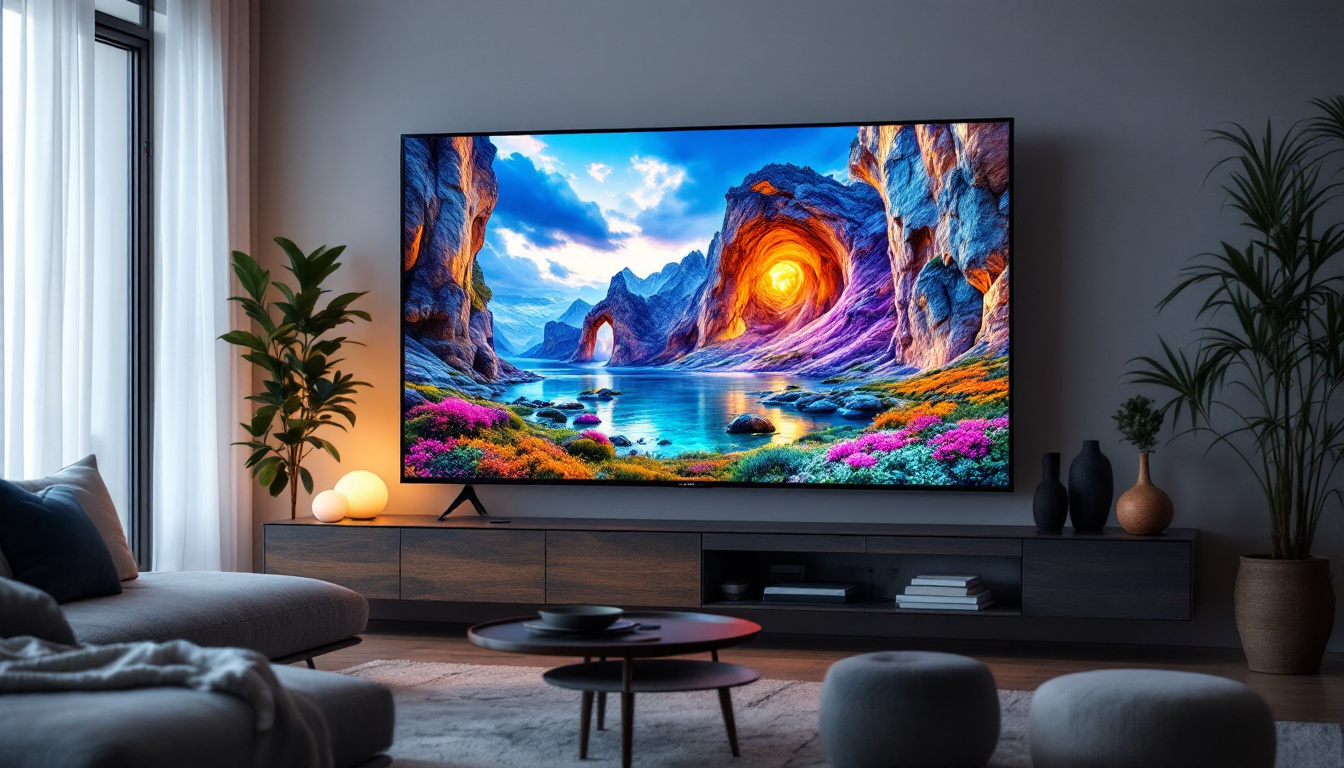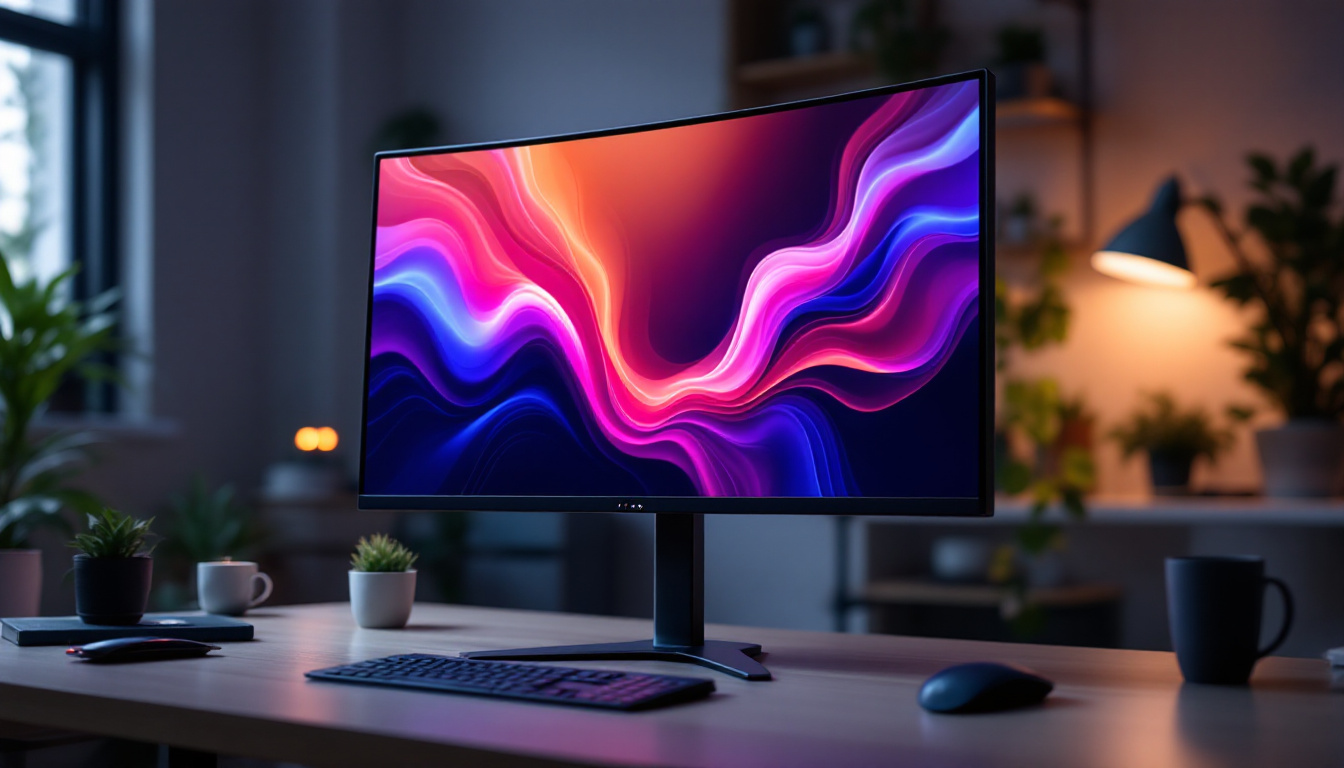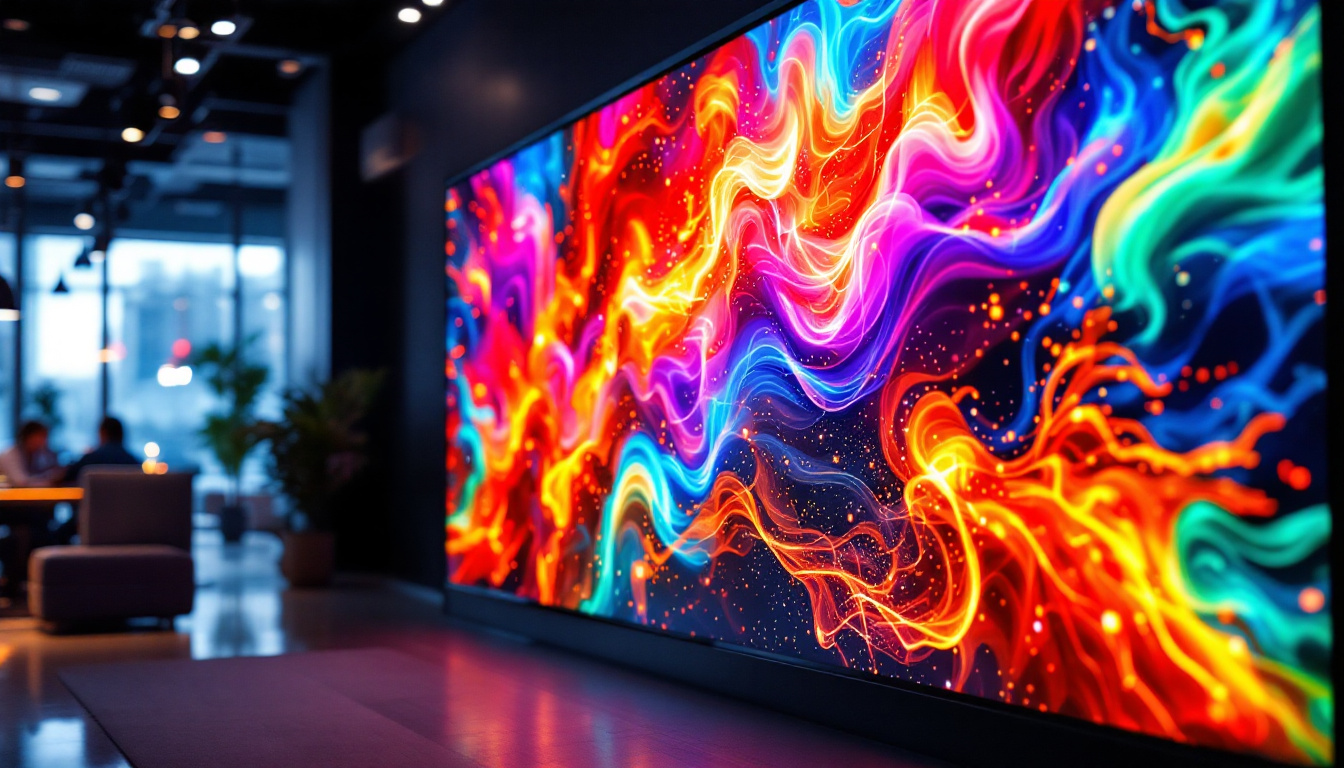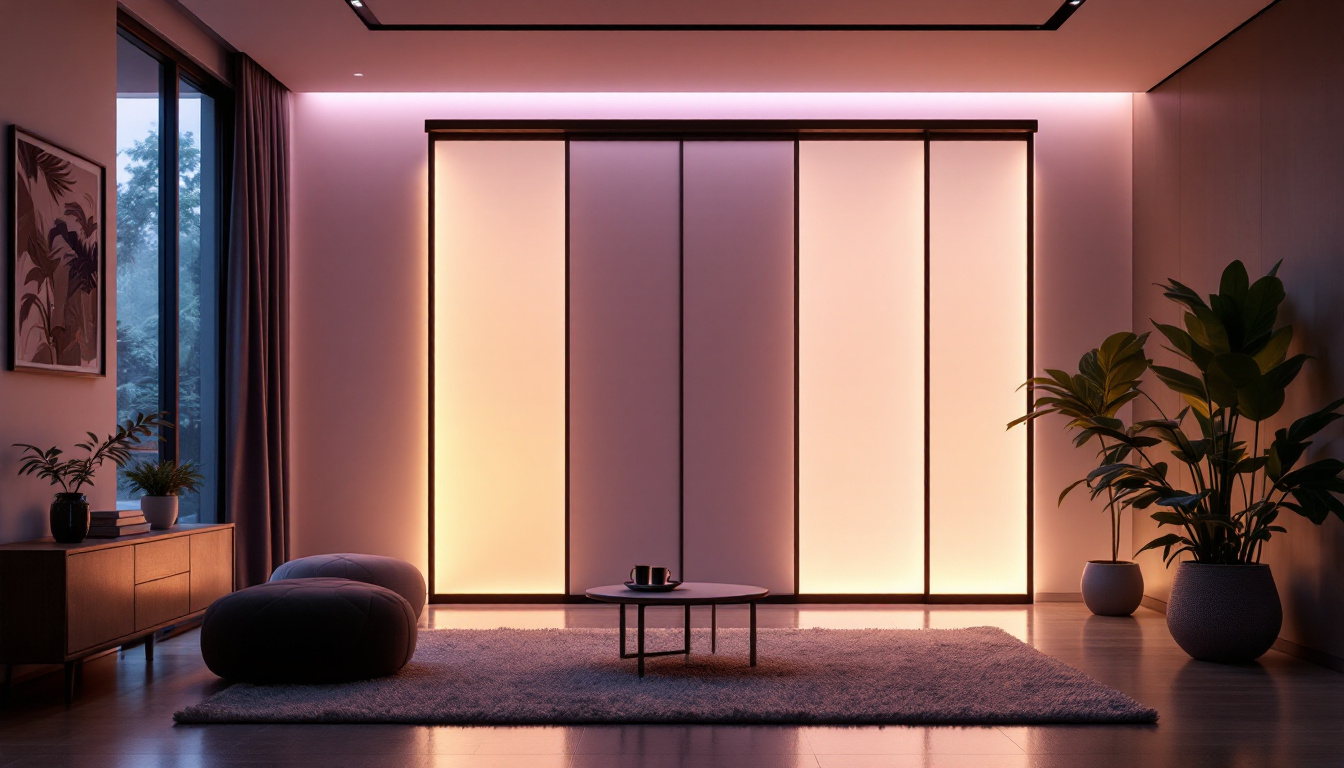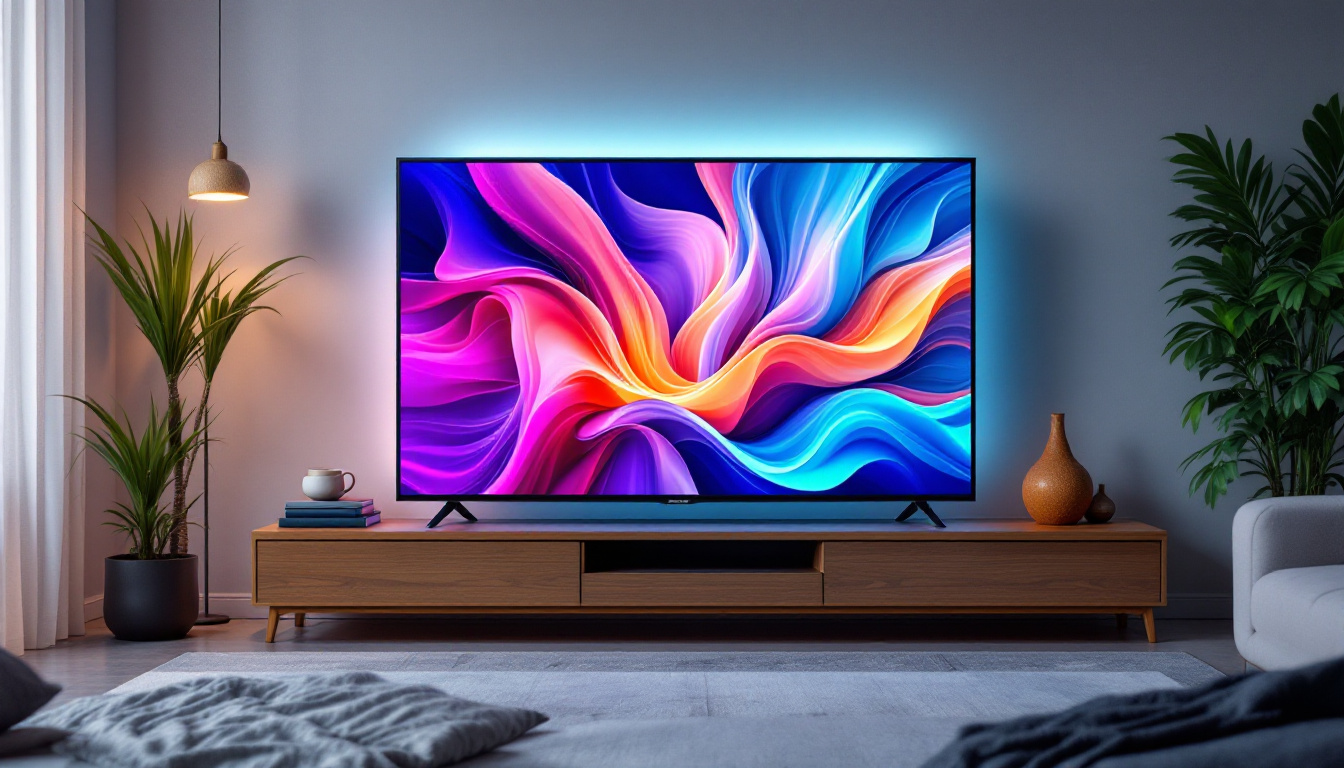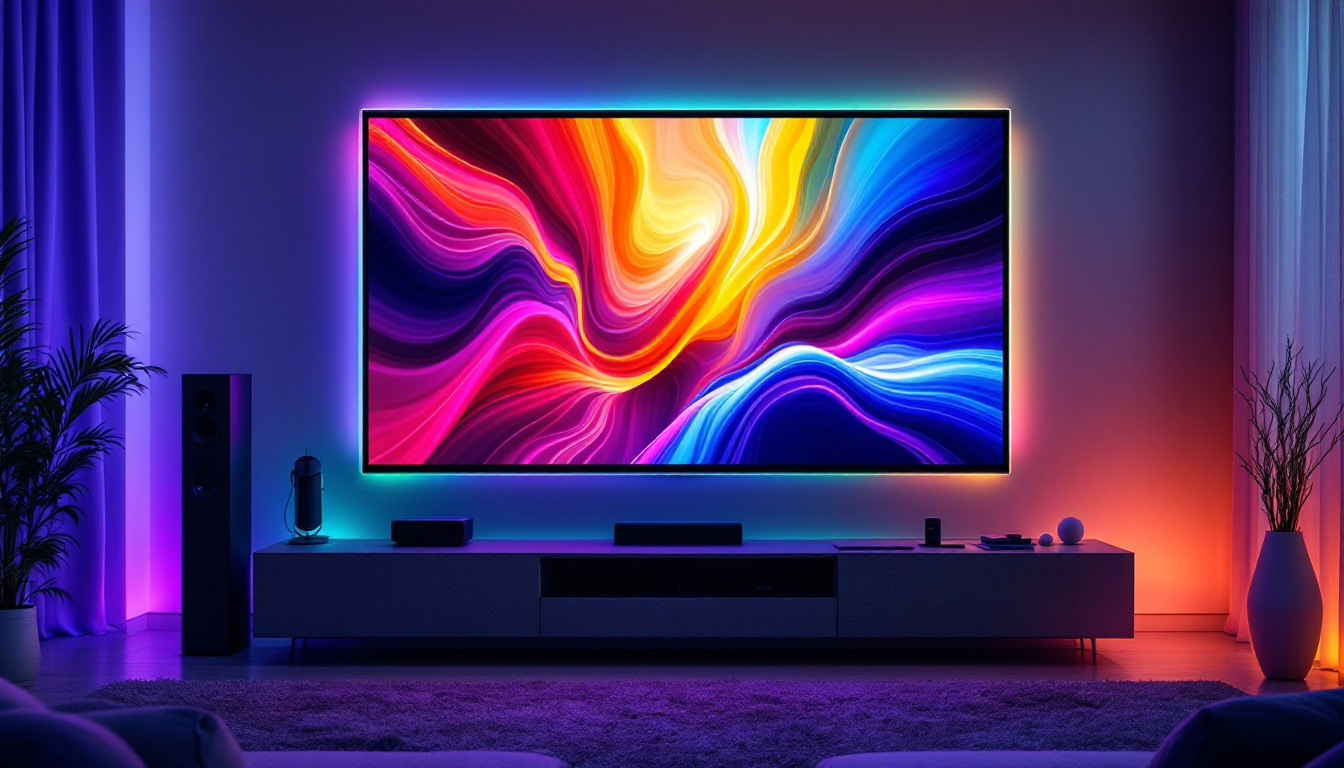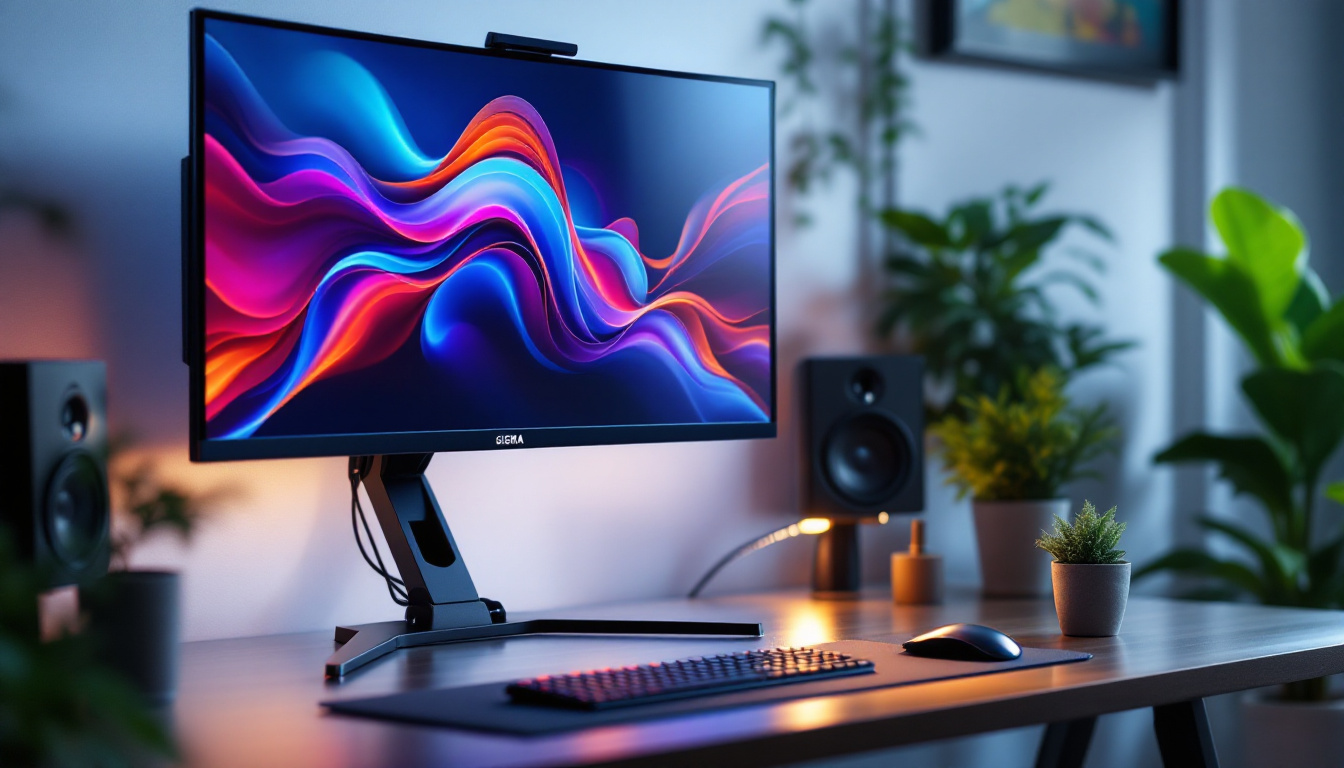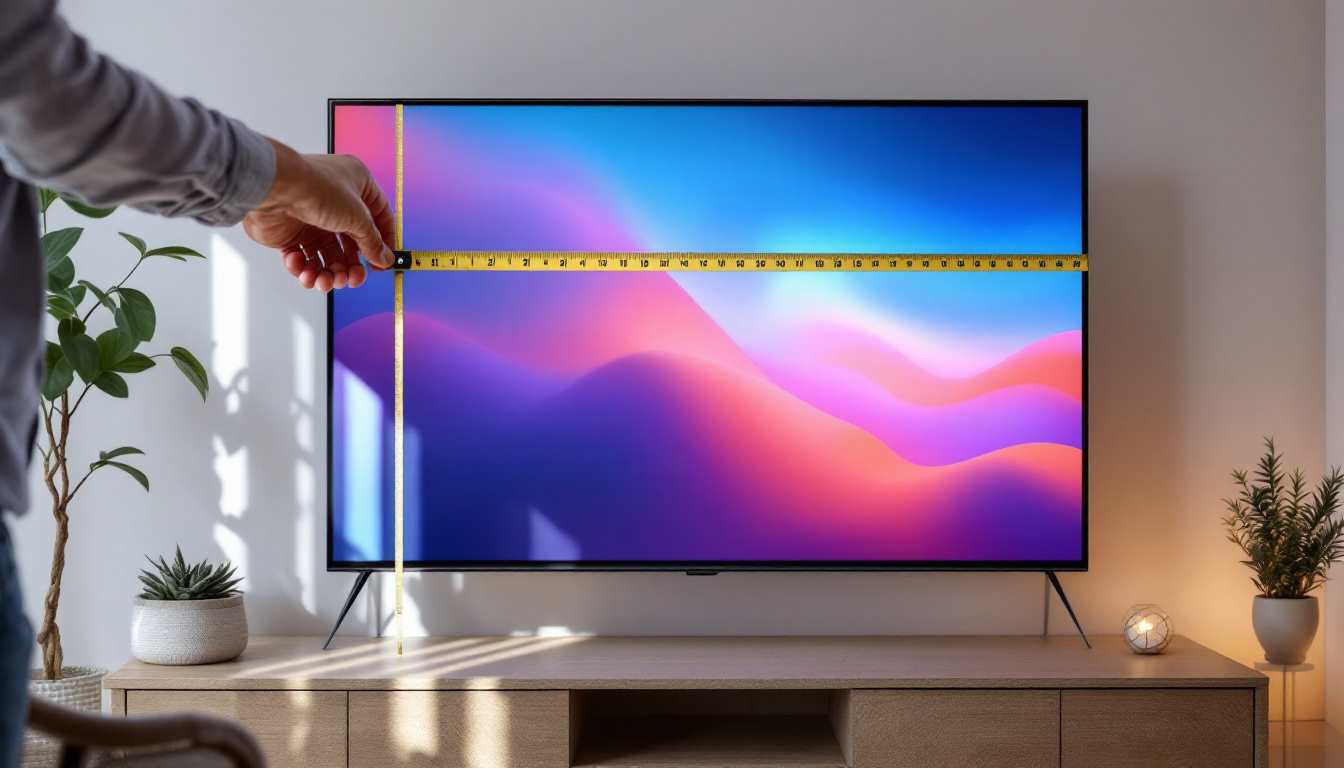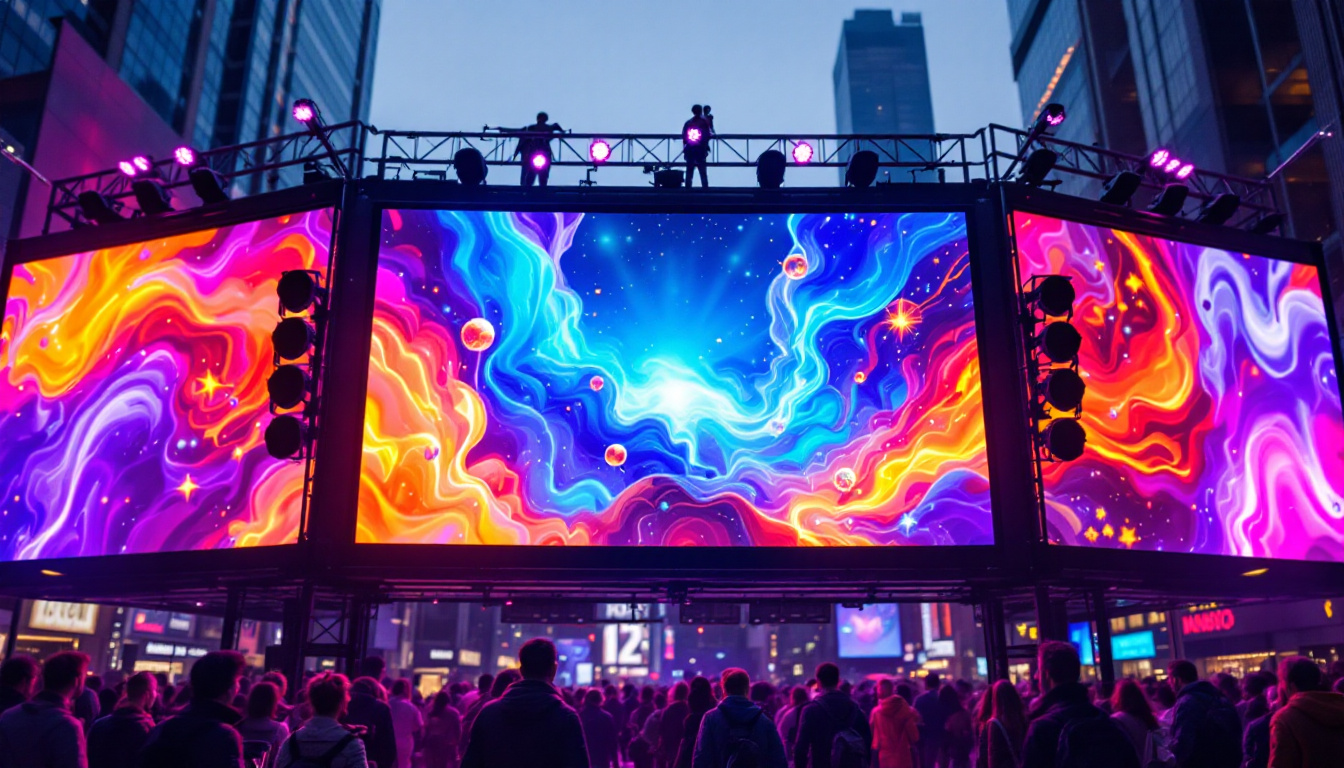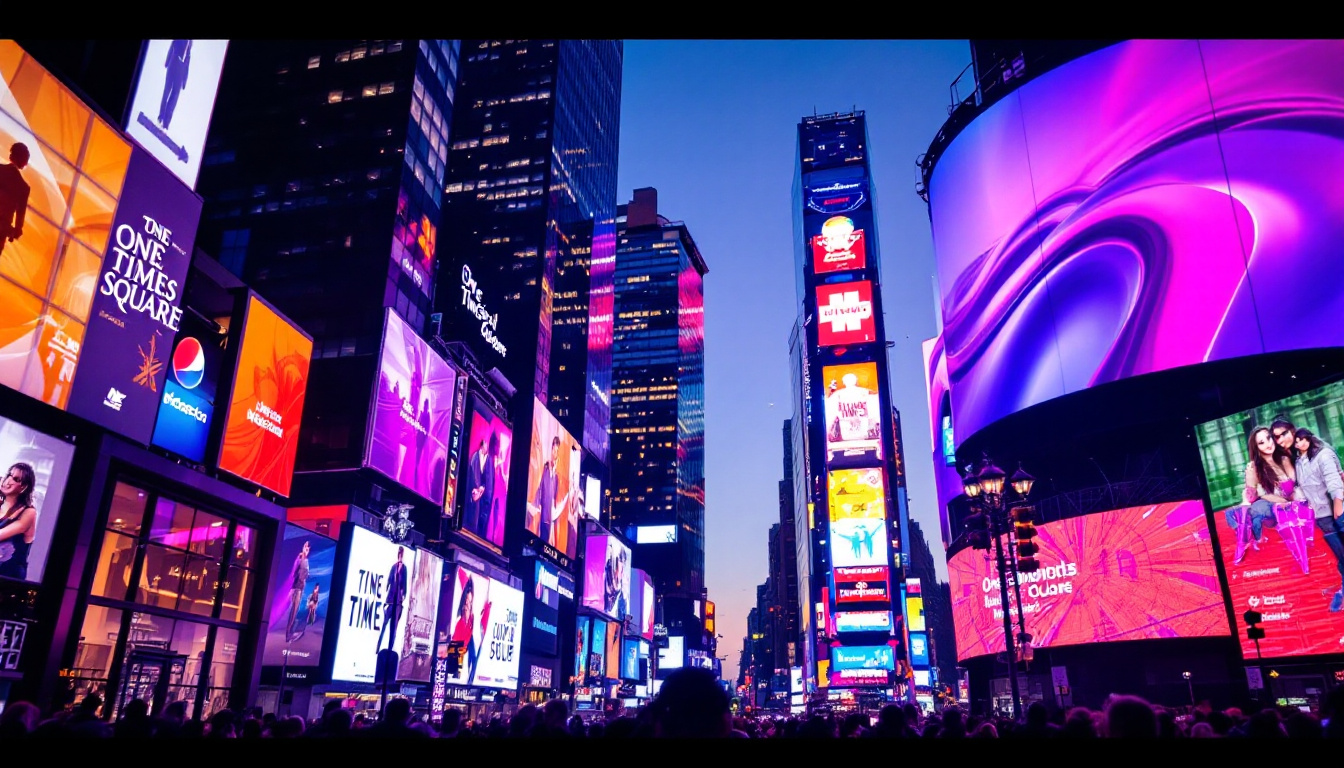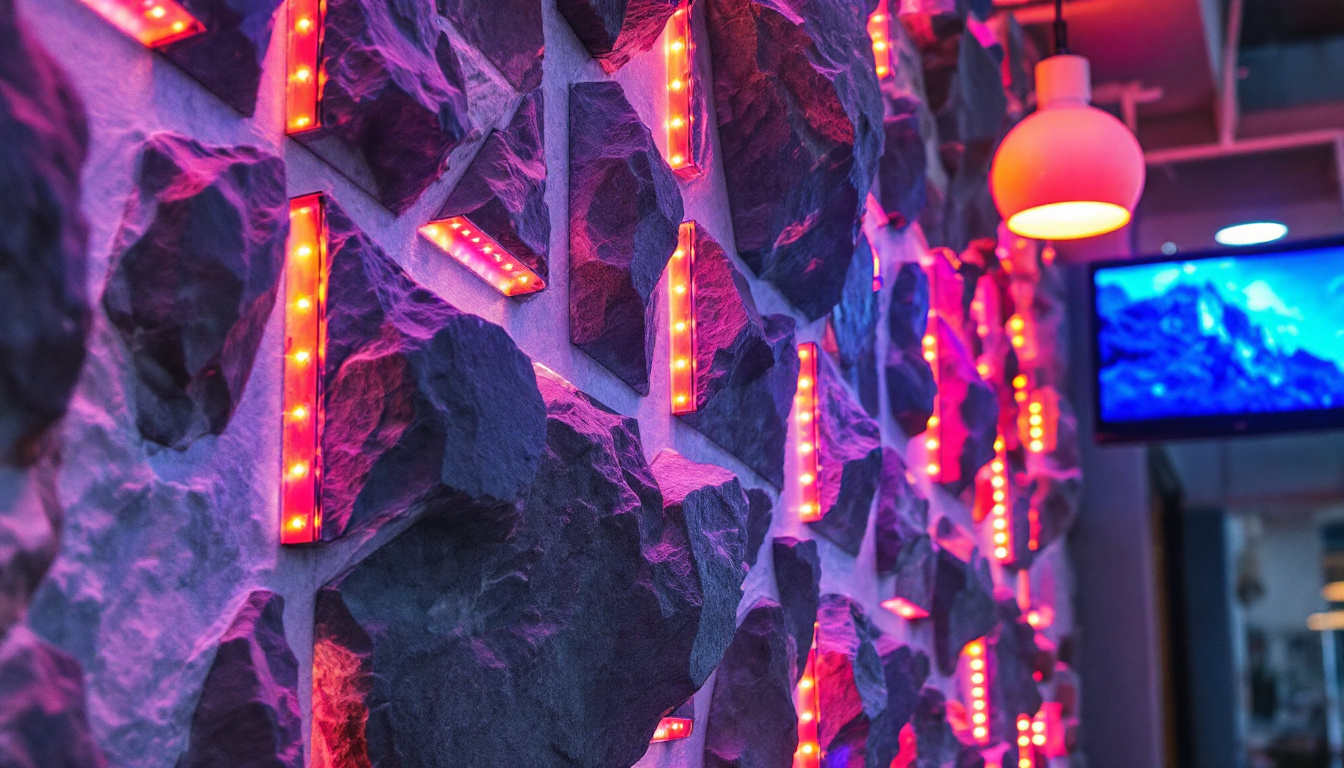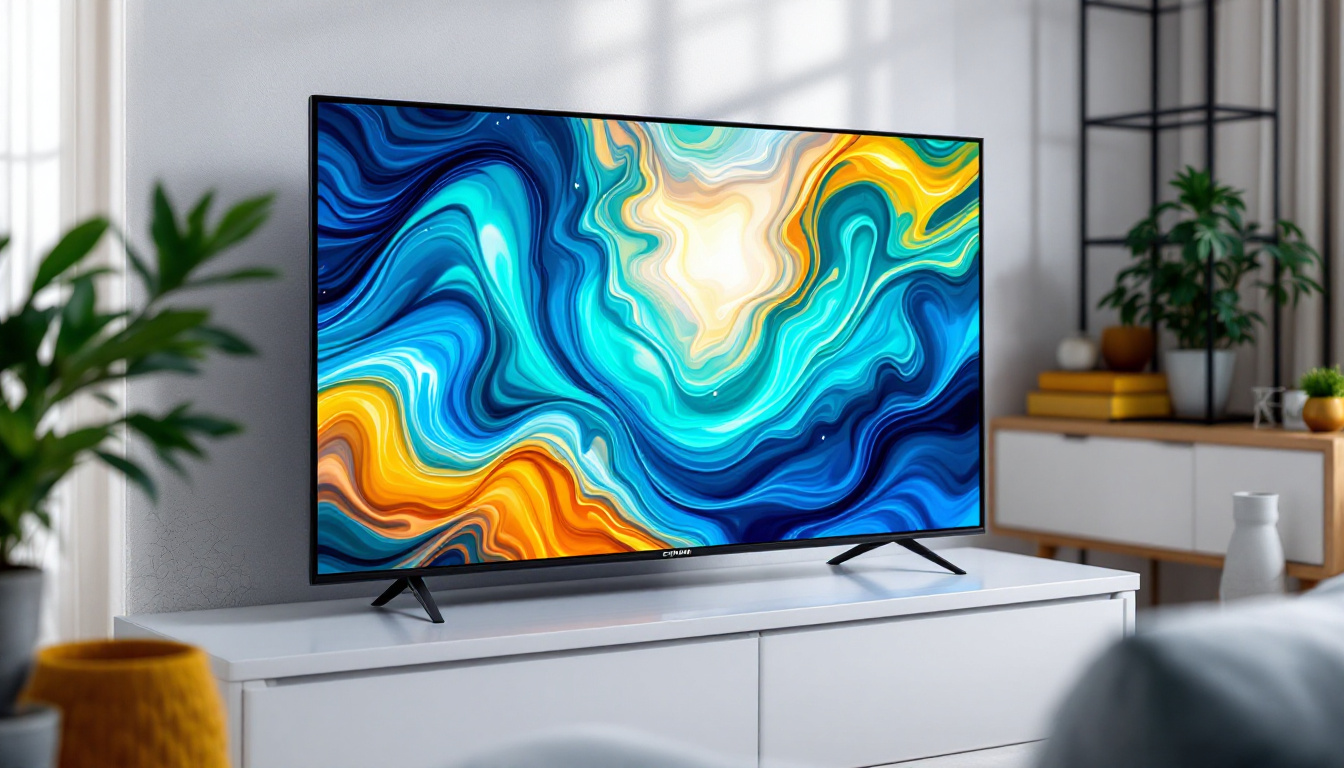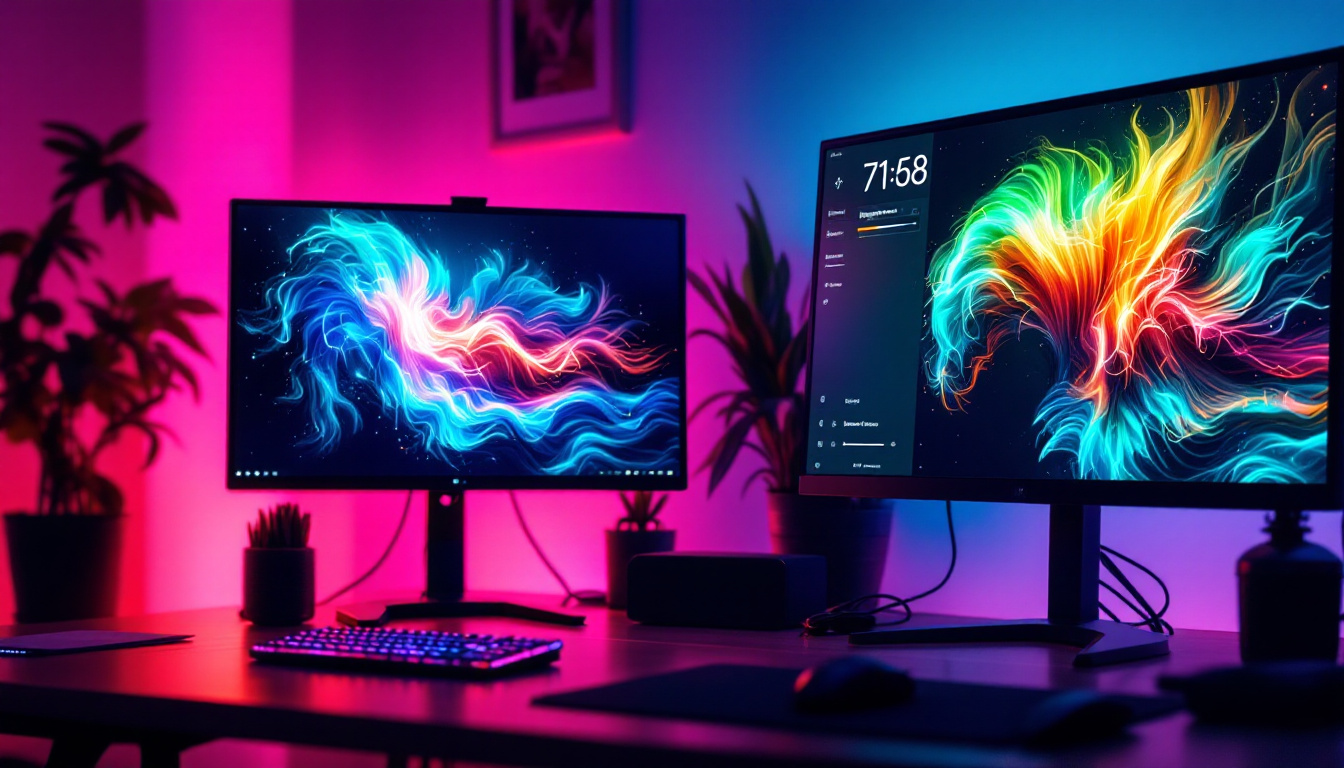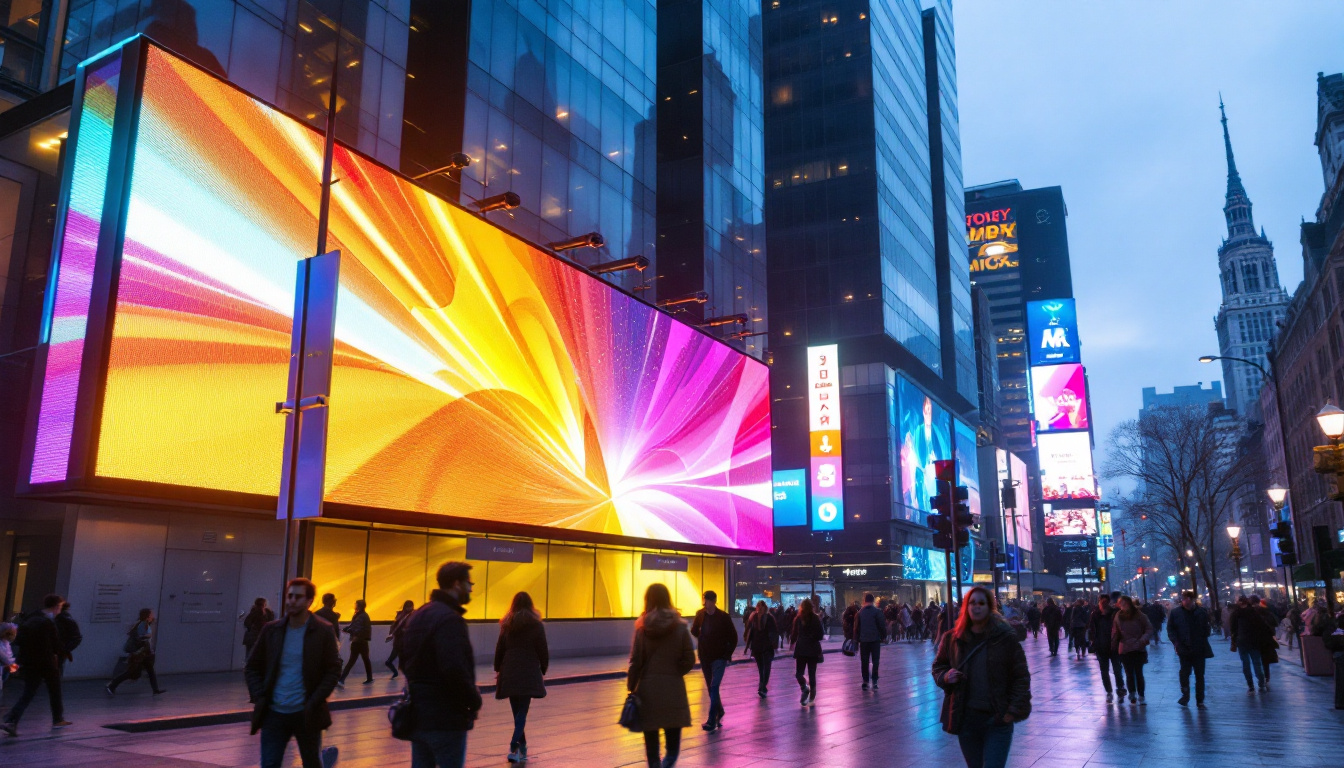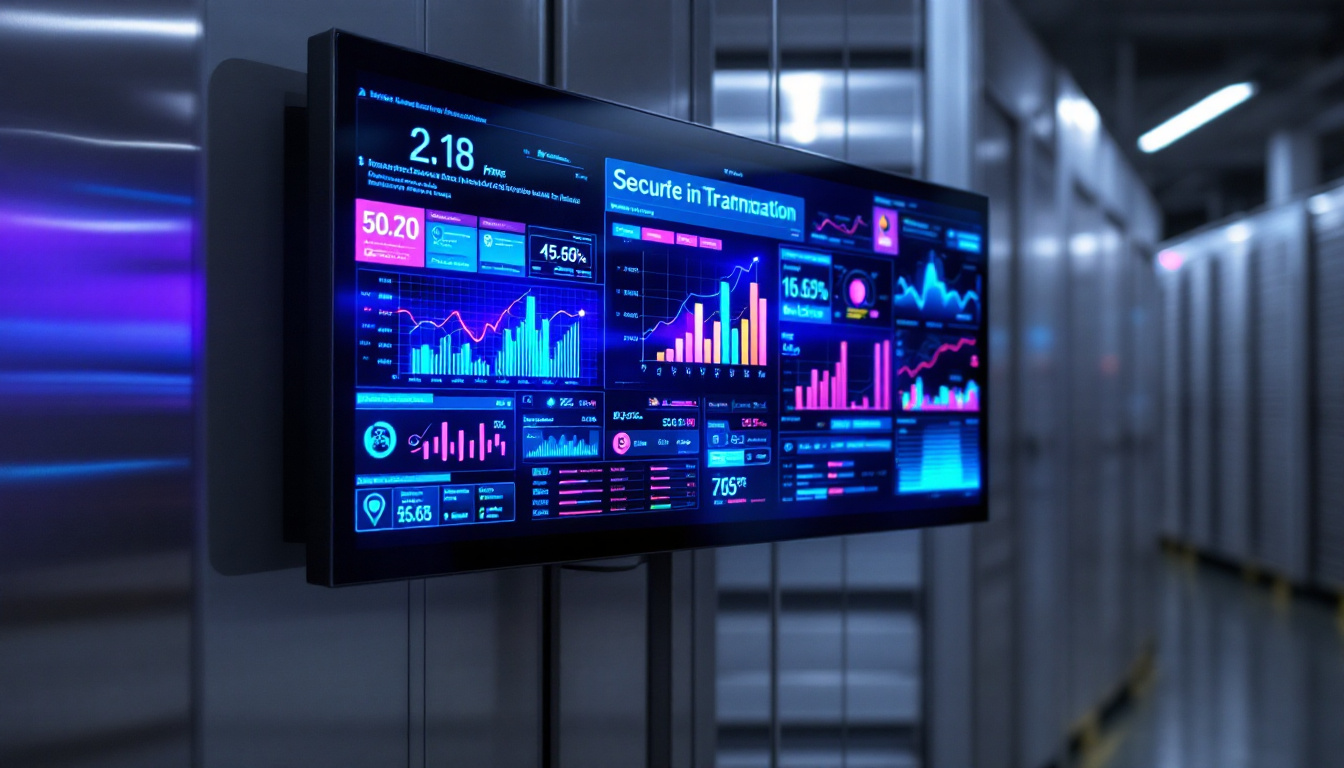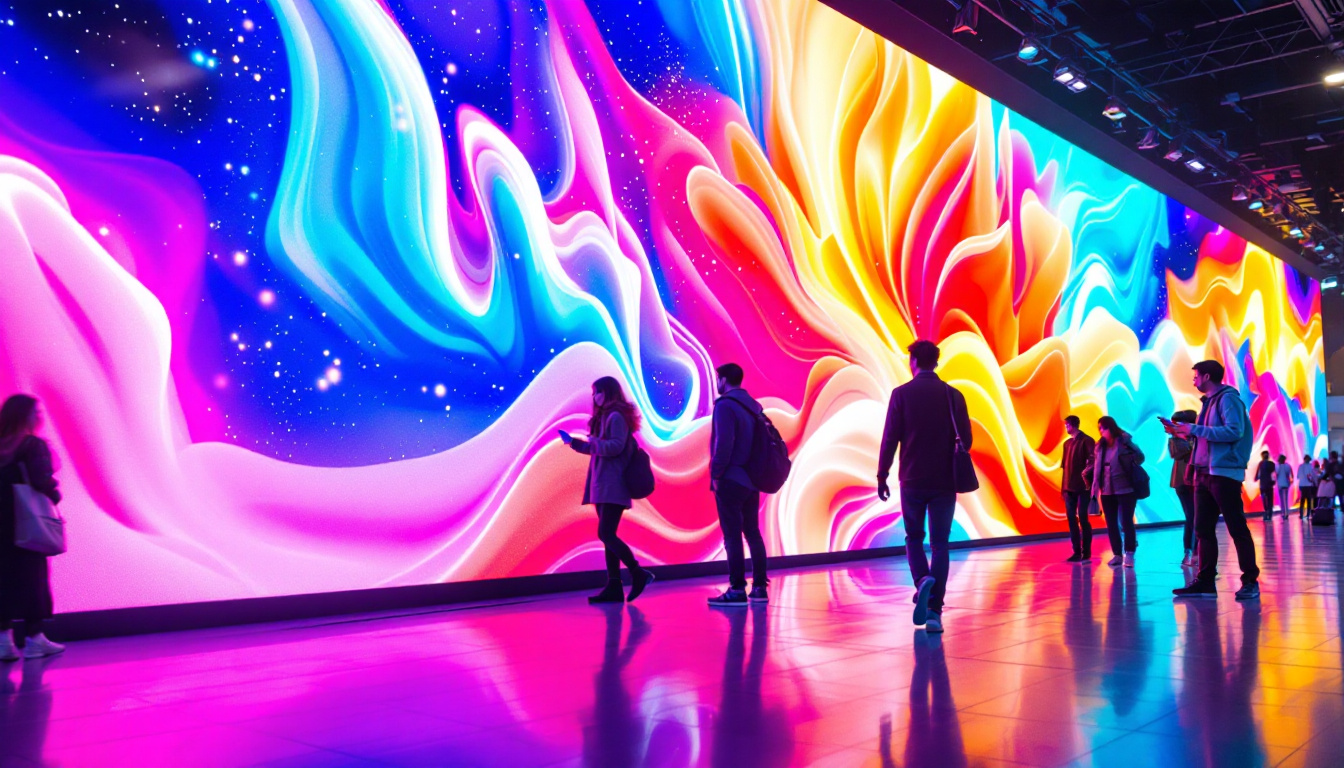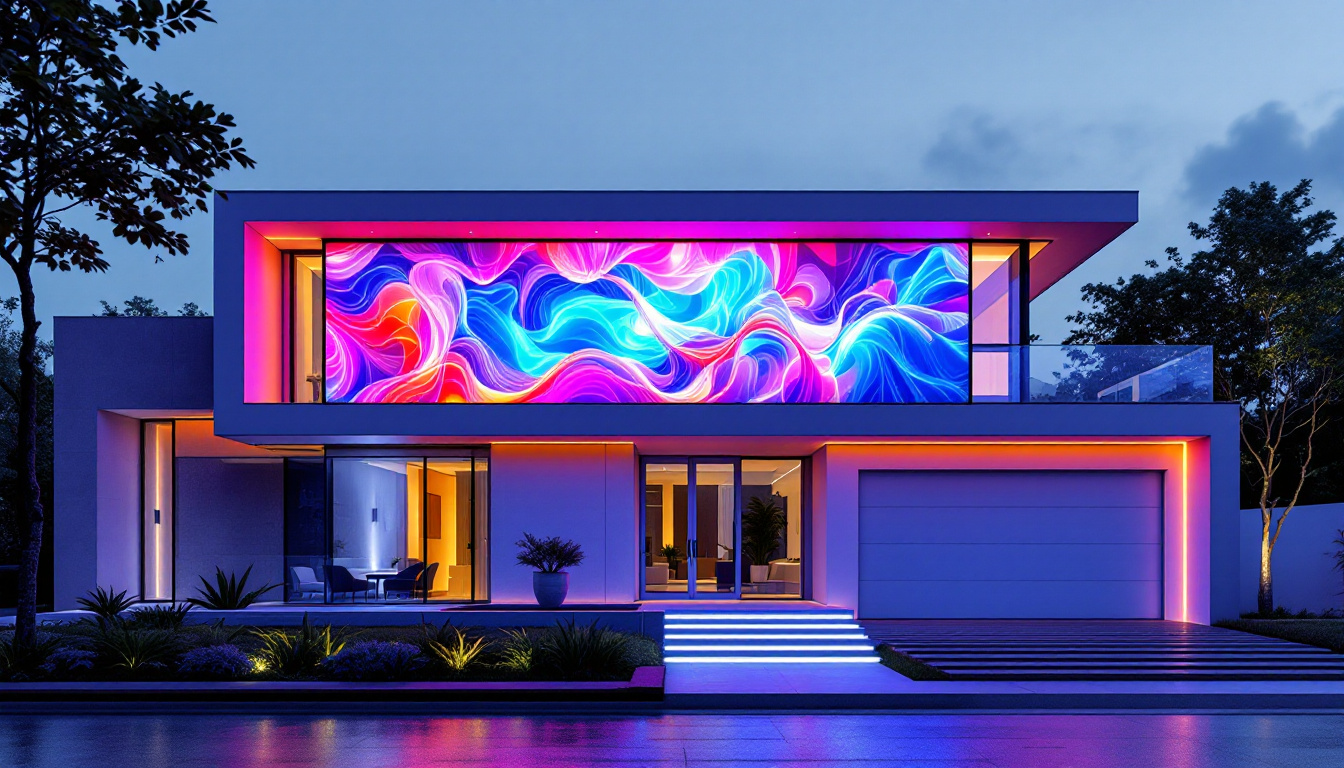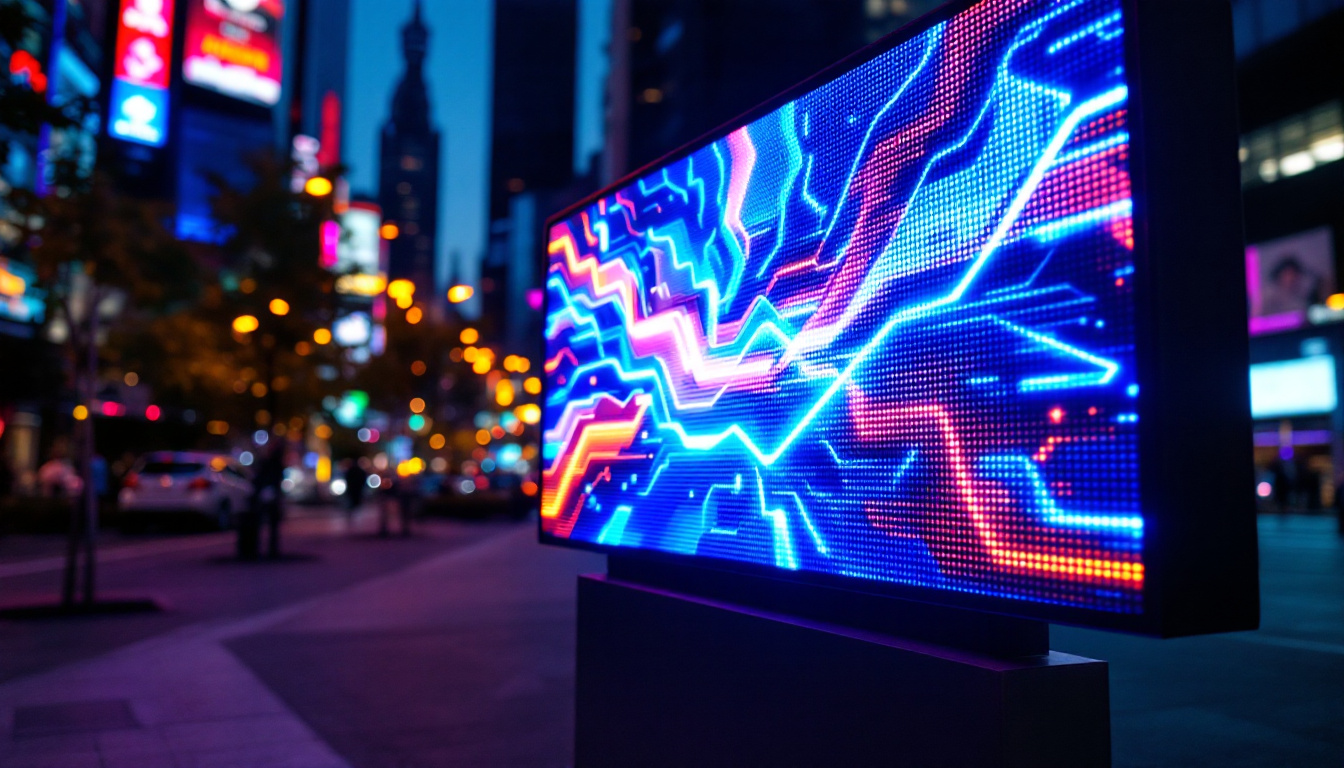In the ever-evolving world of technology, the demand for high-quality display solutions has surged. Among these, LED displays have emerged as a popular choice for both consumers and businesses alike. This article delves into the intricacies of LED displays, their advantages, and their impact on monitor sales.
Understanding LED Technology
Light Emitting Diode (LED) technology has revolutionized the way we experience visual content. Unlike traditional LCD monitors that use fluorescent backlighting, LED displays utilize individual diodes to produce light, offering several advantages in terms of performance and efficiency. This shift not only enhances the visual experience but also contributes to energy savings, making LED technology a more sustainable choice for both consumers and businesses alike.
How LED Displays Work
At the core of LED technology is the semiconductor material that emits light when an electric current passes through it. This process is what enables LED displays to produce vibrant colors and deep contrasts. The arrangement of these diodes can vary, leading to different types of LED displays, including edge-lit and full-array models. The precision with which these diodes can be controlled allows for advanced features such as local dimming, which enhances the contrast ratio by adjusting the brightness of specific areas of the screen based on the content being displayed.
Edge-lit LED displays feature diodes placed along the edges of the screen, while full-array models have a grid of diodes behind the entire display. The latter typically offers better color accuracy and uniform brightness, making it a preferred choice for professional applications. Furthermore, advancements in technology have led to the development of mini-LED and micro-LED displays, which utilize even smaller diodes to create more precise lighting and improved picture quality. These innovations are paving the way for future displays that can achieve unprecedented levels of detail and color fidelity.
The Evolution of LED Displays
LED technology has undergone significant advancements since its inception. Early LED displays were primarily used in outdoor advertising and large-scale installations. However, as the technology improved, it found its way into consumer electronics, becoming a staple in televisions, computer monitors, and mobile devices. The transition from bulky CRT screens to sleek LED displays has not only transformed the aesthetics of our devices but has also enhanced their functionality, allowing for thinner profiles and lighter weights.
Today, LED displays are available in various sizes and resolutions, catering to a wide range of applications. From gaming monitors with high refresh rates to professional-grade displays used for graphic design, the versatility of LED technology is unmatched. Additionally, the rise of 4K and 8K resolution displays has further elevated the viewing experience, providing users with stunning clarity and detail that was previously unattainable. The continuous push for innovation in LED technology promises to bring even more exciting developments, such as flexible displays and enhanced interactive capabilities, which will undoubtedly shape the future of visual media consumption.
Advantages of LED Displays
The popularity of LED displays can be attributed to numerous advantages they offer over traditional display technologies. These benefits make them an attractive option for both personal and commercial use.
Superior Picture Quality
One of the most notable advantages of LED displays is their superior picture quality. With the ability to produce brighter images and deeper blacks, LED technology enhances the overall viewing experience. This is particularly important for activities such as gaming, video editing, and graphic design, where color accuracy and detail are paramount.
Furthermore, the high contrast ratios found in LED displays contribute to a more immersive experience. Whether watching movies or playing games, the vibrant colors and sharp details can significantly enhance the visual appeal.
Energy Efficiency
Energy efficiency is another key advantage of LED displays. Compared to traditional LCDs and CRTs, LED monitors consume significantly less power. This not only leads to lower energy bills but also reduces the environmental impact associated with energy consumption.
Additionally, the longevity of LED displays is noteworthy. With a lifespan that often exceeds 50,000 hours, these monitors are a long-term investment, reducing the need for frequent replacements and further contributing to sustainability efforts.
Thin and Lightweight Design
The design of LED displays is another factor that sets them apart. Their thin and lightweight construction allows for sleek aesthetics and easy portability. This is particularly beneficial for businesses that require multiple displays for presentations or events, as they can be easily transported and set up.
Moreover, the slim profile of LED monitors enables them to fit into various environments, from home offices to corporate settings, without occupying excessive space.
Market Trends in LED Monitor Sales
The market for LED monitors has experienced substantial growth in recent years, driven by advancements in technology and changing consumer preferences. Understanding these trends can provide valuable insights for both consumers and businesses looking to invest in display solutions.
Increased Demand for High-Resolution Displays
As content quality continues to improve, consumers are increasingly seeking high-resolution displays. 4K and even 8K LED monitors are gaining popularity, particularly among gamers and professionals in creative fields. These high-resolution displays offer unparalleled detail and clarity, making them ideal for tasks that require precision.
Additionally, the rise of streaming services and high-definition content has fueled the demand for monitors that can fully showcase this quality. As a result, manufacturers are focusing on producing displays that not only meet but exceed these expectations.
Gaming Monitors on the Rise
The gaming industry has significantly influenced the LED monitor market. Gamers are looking for monitors that provide high refresh rates, low response times, and advanced features such as G-Sync and FreeSync technology. These features enhance the gaming experience by reducing lag and screen tearing, making LED displays a top choice for gamers.
As esports and competitive gaming continue to grow, the demand for specialized gaming monitors is expected to rise. This trend has prompted manufacturers to innovate and create displays tailored specifically for the gaming community.
Corporate Adoption of LED Displays
Businesses are increasingly recognizing the benefits of LED displays for presentations, signage, and collaborative work environments. The clarity and brightness of LED monitors make them ideal for conference rooms and shared spaces, enhancing communication and productivity.
Moreover, the versatility of LED technology allows for various configurations, including video walls and interactive displays. This adaptability makes LED monitors an attractive option for companies looking to create engaging and dynamic workspaces.
Choosing the Right LED Monitor
With a plethora of options available in the market, selecting the right LED monitor can be a daunting task. Several factors should be considered to ensure that the chosen display meets specific needs and preferences.
Assessing Your Needs
Before making a purchase, it is essential to assess individual needs. Consider the primary use of the monitor—whether for gaming, professional work, or general use. Each application may require different specifications, such as resolution, refresh rate, and color accuracy.
For gamers, a monitor with a high refresh rate and low response time is crucial, while professionals in graphic design may prioritize color accuracy and resolution. Understanding these requirements can help narrow down the options and lead to a more satisfying purchase.
Evaluating Specifications
When comparing LED monitors, it is vital to evaluate their specifications. Key factors to consider include resolution, refresh rate, response time, and connectivity options. Higher resolutions, such as 4K, provide better detail, while a higher refresh rate enhances smoothness in motion, particularly in gaming.
Additionally, consider the monitor’s connectivity options, such as HDMI, DisplayPort, and USB-C. Compatibility with existing devices is essential for a seamless experience.
Reading Reviews and Ratings
Before finalizing a purchase, it is advisable to read reviews and ratings from other users. This feedback can provide valuable insights into the monitor’s performance, reliability, and overall user satisfaction. Websites that specialize in technology reviews often offer comprehensive evaluations and comparisons, making it easier to make an informed decision.
Furthermore, seeking recommendations from friends or colleagues who have experience with specific models can also be beneficial. Personal experiences can shed light on aspects that may not be covered in formal reviews.
The Future of LED Displays
The future of LED displays looks promising, with ongoing advancements in technology and design. As consumer demands evolve, manufacturers are continuously innovating to meet these expectations.
Emerging Technologies
One of the most exciting developments in LED technology is the integration of smart features. Smart LED displays equipped with built-in operating systems and connectivity options are becoming increasingly popular. These monitors allow users to stream content directly without the need for external devices, streamlining the viewing experience.
Additionally, advancements in display resolution, such as MicroLED and OLED technologies, are on the horizon. These innovations promise even better picture quality, with improved color accuracy and contrast ratios, further enhancing the visual experience.
Sustainability Initiatives
As environmental concerns continue to grow, the display industry is also focusing on sustainability. Manufacturers are exploring eco-friendly materials and production processes to reduce their carbon footprint. Energy-efficient designs and recyclable components are becoming standard practices, aligning with the global push for sustainability.
Consumers are increasingly prioritizing products that are environmentally friendly, and the display industry is adapting to meet these expectations. This shift not only benefits the planet but also appeals to a growing market segment that values sustainability.
Conclusion
LED displays have undoubtedly transformed the landscape of visual technology, offering superior picture quality, energy efficiency, and sleek designs. As market trends continue to evolve, consumers and businesses alike are recognizing the value of investing in high-quality LED monitors.
By understanding the intricacies of LED technology, the advantages it offers, and the factors to consider when purchasing, individuals can make informed decisions that enhance their viewing experiences. With the future of LED displays looking bright, it is an exciting time for both consumers and the industry as a whole.
Discover LumenMatrix’s Advanced LED Displays
Ready to elevate your visual experience with the latest in LED technology? Explore LumenMatrix’s comprehensive range of cutting-edge LED display solutions tailored to your needs. From captivating Indoor LED Wall Displays to dynamic Outdoor LED Wall Displays, and from versatile Vehicle LED Displays to innovative Custom LED solutions, LumenMatrix is at the forefront of revolutionizing visual communication. Whether you’re looking to enhance brand visibility or create immersive visual experiences, check out LumenMatrix LED Display Solutions today and empower your business to communicate with impact and clarity.

